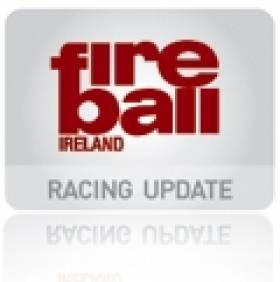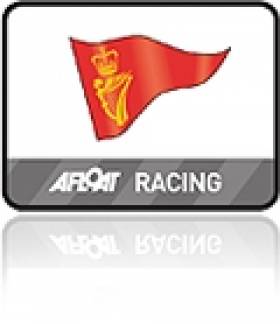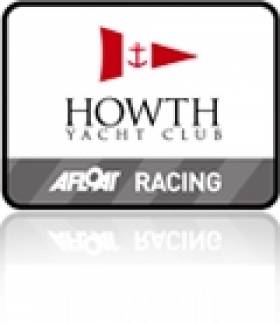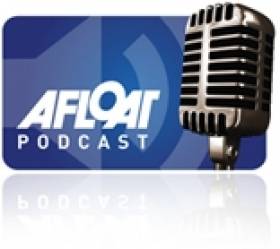Displaying items by tag: coaching
Tralee Bay Hosts UK Sailmakers For Coaching Weekend
#TBSC - Tralee Bay Sailing Club hosted the UK Sailmakers Ireland team of Des McWilliam and Graham Curran on the water for two days of coaching this past weekend (13-14 June).
A series of 16 races was run over the two-day event in Fenit, where a lot was learned and plenty of fun was had by all, as the video above can attest! A photo gallery of the weekend is also available HERE.
Two-Step Introduction to the Irish Fireball Summer Season
#fireball – Normally the start of the Irish Fireball summer season is heralded with a coaching session by a leading UK Fireballer doing the honours. For a few years this weekend session was undertaken by Adam Bowers of ABC for Winning. Last year, Adam was succeeded by Simon Potts who with Tom Gillard won the 2013 Fireball Worlds in Portoroz in Slovenia (15091). Simon's circumstances have changed so this year the training will be undertaken by Richard Wagstaff who is also a former World and European Championship winning crew.
In tandem with Matt Burge, Richard won the World Championships hosted by Sligo Yacht Club in 2011 (15036) and won the Europeans the following years in Bracciano in Italy (15084), and Portoroz, Slovenia, again with Matt (15093).
The weekend of coaching takes place this weekend at the Dun Laoghaire Motor Yacht Club with a 09:00 start on the Saturday morning. Topics that are down for discussion include;
• Boat review & set up (in the dinghy park)
• Spinnaker hoist and acceleration on the top reach
• Straight line speed
• Crew tips and techniques
• At the start
• On the beat
• The hoist/gybe/drop
• Boat preparation – control lines set-up, rigging
• Regatta preparation, research.
Rigging and introductions will start off the proceedings on Saturday morning. Supper is proposed for the Purty Kitchen after the day's teaching is concluded. Sunday has a 09:30 start and it is expected that the Porsche Cup will be contested again.
The funding of the weekend avails of a scheme promoted by the Irish sailing Association and the Irish Fireball Class would like to acknowledge the support of the ISA in allowing us to offer this weekend of coaching to our members.
A recent class rule change however, prompted an earlier triggering of thoughts of summer racing. A reduction in the all up weight of the Fireball (hull, permanent fittings and weight correctors) from 79.4 to 76.4kg led to a very well organised weighing session that took place last Saturday, 18th April.
Approximately, fourteen Fireballs underwent a reweighing of either of two varieties – a full re-weighing in accordance with Class rules or a weighing of the correctors in individual boats. The Class rules require the boats to undergo a period of drying before the weighing takes place and Stephen Oram was able to organise premises for this purpose through work connections. Stephen also organised for appropriate scales to be available on the day. Irish Class Measurers, Eddie Ferris and Owen Sinnott documented the process which was a specific requirement of the rule change implantation and individual boat certificates of measurement were adjusted accordingly.
The statistics made for interesting discussion with some of the older boats putting relatively modest amounts of lead back into their boats. Most interestingly was the fact that one of the newest boats in the fleet was in actual fact carrying too much lead, so we can expect them to have an upturn in speed through the water. Despite a work schedule that embraced the prospect of weighing fourteen boats, a conveyor belt approach was taken to the weighing process and each boat was also checked for material left behind accidentally in the buoyancy tanks.
Class Chair, Marie Barry made sure that all those in attendance were properly looked after with sandwiches, biscuits, chocolate cake and tea/coffee available for all the participants.
Our thanks therefore go to Marie, Stephen, Eddie and Owen for giving of their time to the Class cause, and to Stephen for organising the premises and scales. The statistics of the day will be fed to Tom Egli, Technical Representative of Fireball International so that an assessment of the exercise worldwide can be undertaken.
A leaner Irish Fireball fleet is the favourable outcome of the day's proceedings!
With boats re-weighed last weekend and coaching this weekend, the advent of racing can be eagerly looked forward to and this gets underway with the first Tuesday night race next week, 28th April.
Laser Training Starts at Royal Cork
Following a detailed briefing on the Club's Autumn and Winter schedule, Thomas Chaix outlined the Irish Sailing Association programme for the coming year. This includes club, regional and academy training options available designed to prepare the fleet for the first major of next year - the Munsters in Baltimore at Easter.
Kinsale Oppie Training on Bank Holiday, by George
The Two Georges are hosting an intensive three-day optimist training course in Kinsale over the June Holiday weekend. Georges Kenefick and Kingston, both highly decorated dinghy sailors, will provide aspiring opti sailors with three days of race prep, on-the-water training, video analysis and high-end reference materials to take away.
The details are below, with contact details at the bottom. The cost is €125 per sailor.
OPTI RACEWEEK 2010
3 Days, 2 Nights, 2 Good to miss!
Everyone Welcome
Venue 1: Kinsale Yacht Club, 5-7th June, 2010
This 3 day intensive race clinic is MUCH more than a training camp, it's a High Performance Racing Experience and good value for money!
3 DAY PRICE: €125.00
So what do you get?
So plan is for Sat/Sun/Mon
Sat (JUNE 5) 11-4.30PM
Sun (JUNE 6) 10-4.30PM
Mon (JUNE 7) 10-4.30PM
We are aiming to get at least 10 hours on the water over the three days, plus all of the video analysis, handouts, presentations, and a mini regatta will be carried out as planned.
3 days of great coaching Video Analysis and detailed briefs each day Coach rotation for maximum benefit
Rule, Tactics and Event Prep Sessions
A copy of the 'Opti Sailing Bible!' booklet A PROFESSIONALLY MADE DVD of the Best Bits of the clinic A Team Racing Challange - prepare for war! A Mini Regatta on day 4 - to put your knowledge to the test.
Coaches:
George Kingston KYC/RCYC
A Youth European Radial Champion
A National Champion in 4 different classes
2008 Irish Optimist World Team Coach
Chosen as the 2010 Australian National Optimist Coach
George Kenefick RCYC
A Student Yachting World Champion
An Irish National Optimist Team Coach
A Junior Helmsman Champion
Conatct; George Kingston - 087 7578082
Junior Race Training in HYC on J80s
Sixty-four of Howth Yacht Club's junior sailors were treated to an evening of race training in the ISA Sailfleet J80s on a fresh Monday evening, under the guidance of Laura Dillon.
A host of support vessels and RIBs facilitated the running of the evening which saw all the children (ranging in age from 9 to 15) taking part in two short windward-leeward 'races' with two senior volunteers on each of the eight J80s.
The moderate southerly wind facilitated exciting conditions in the flat waters of Howth Sound and gave many of the children their first taste of one-design keelboat racing. More than thirty-five volunteers escorted the exhilarated sailors back to the club after their experience.
Coaching - not just for athletes
This week's Afloat podcast looks at coaching. Who needs it, who doesn't know they need it, how much it should cost and what you should be getting. Plus, we go off the water to see how a business coach is helping marine businesspeople stay, ahem, Afloat.
Thanks to Thomas Chaix (www.tcsailingcoach.com) and Jason McChesney (www.businesscoach.ie) for taking part.


























